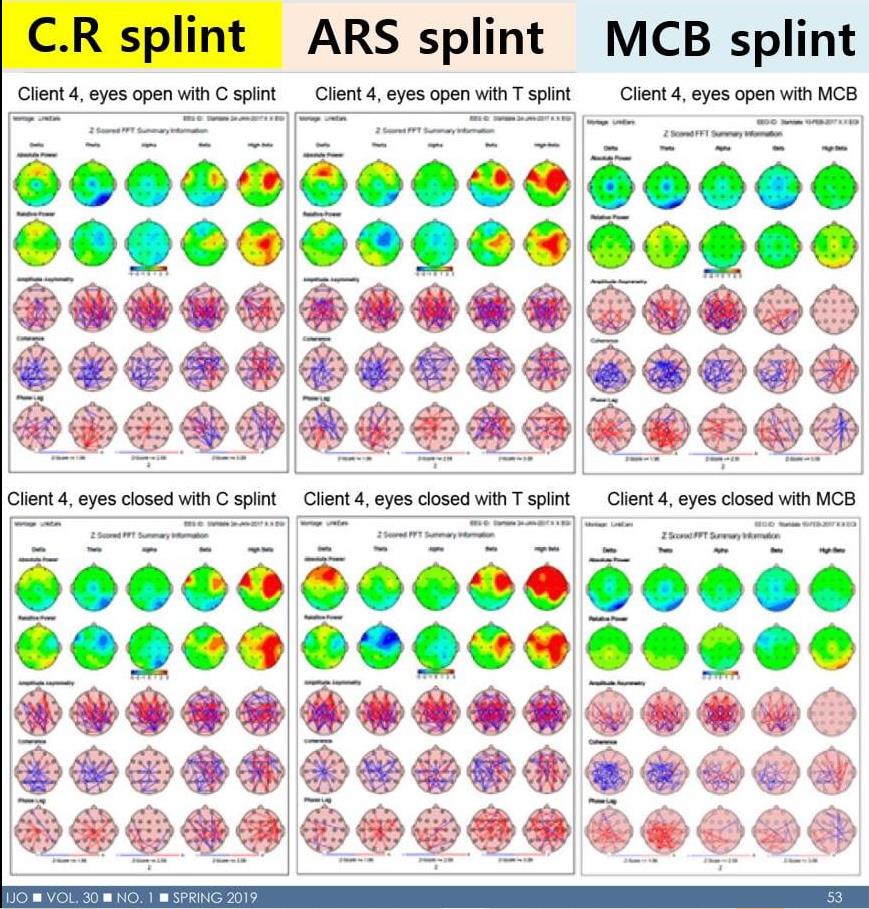
Changes of pharyngeal airway size and hyoid bone position following orthodontic treatment of Class I bimaxillary protrusion.
2월 1, 2023
Pupillary light reflex
2월 1, 2023Where is the 3D position of a good lower jaw?
Where is the 3D position of a good lower jaw?
When the lower jaw hits the teeth in a bad position, the following happens:
The previously misaligned skull and face become more misaligned, resulting in increased tension in the dura mater and minute movements of the skull, causing problems in the transmission of cranial nerves to the body. This can be seen as follows.
1. If you close the teeth in the wrong mandibular position, the movement of the eyeballs will speed up and you can see the movement by palpation of your fingers. Next, there is a lot of movement in the temporomandibular joint area. This means that the temporomandibular joint is moved to a more incorrect position. This means that the skull and temporomandibular joint are misaligned.
2. Problems with blood circulation (oxygen) occur. This can be seen by palpation comparison of the supraorbital and supratrochlear arteries with and without teeth contact.
3. All parts of the body are twisted as they fall down. As the shoulders and pelvis are twisted in opposite directions, the torsion in the internal organs becomes severe.
4. The body's self-healing function is lowered and the immune function is lowered.
The position where the above movement is reversed is the Mandibular Cranial Balancing (MCB) position.
If the left and right positions of the lower jaw are misaligned, the sphenoid bone is twisted.
If the anterior-posterior position of the lower jaw is misaligned, the temporal bone is twisted.
The occipital bone can move normally only when the occlusal height of the teeth is correct in the position where the left and right and front and rear positions of the lower jaw are correct. This location is the MCB position.
Now, press two fingers on the outside of your right thigh and slide it down with force. If you count the number 4, you can feel it falling down. This means that all your muscles will fall down. However, as soon as you put on the MCB splint, the muscles no longer sag downward and if you apply force upwards, you can feel it rising up when you count the number 1.
In the skull, it can be seen that all the skull bones move in the direction in which they are not moved by palpation when they are correctly aligned in the three-dimensional direction. In this movement, you can feel the three-dimensional movement in the non-distorted direction even when the sphenoid bone and the maxilla are in the same twist (Torsion) or in opposite directions (Side-bending).
All dental treatment should be performed in a position where the three-dimensional position of the lower jaw is not shifted by each skull. With this treatment, not only the dentist himself, but also his family, patients, and everyone on the planet will be happy.
This fact should be known by health officials in every country, which will increase national competitiveness and save a lot of money.
